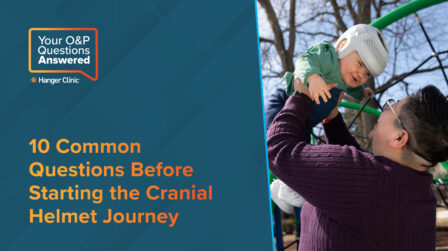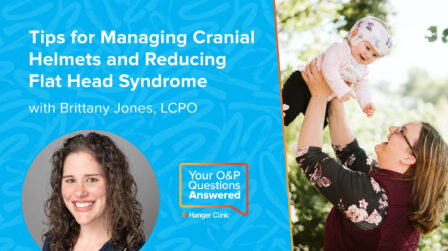Early Intervention
A baby’s routine takes up many hours throughout the day. Tummy time and proper positioning techniques help your little one strengthen their neck and shoulder muscles, encouraging movement and the important milestones of rolling, sitting, and crawling. This is important because spending a significant time in the same position can cause flattening of the head (plagiocephaly), which may be worsened by torticollis—a condition where tight or weak neck muscles cause the head to tilt to one side.
- Tummy time includes any activity where your baby’s head is not flat against a surface, encouraging head and neck control and relieving pressure. Your baby should experience time off their back and on their tummy during their daily routine while they are awake and supervised. Always stay with your baby during tummy time and vary their positions during the day to promote healthy development.
- Repositioning is a focused effort to change the placement of your child’s head to reduce the risk of flat spots. For example, laying your baby’s head on the left side at bedtime tonight and on the right side tomorrow.
There are many opportunities to vary your baby’s positions throughout the day. This can occur during holding, carrying, play, diaper changing, dressing and bathing, bottle feeding, breast feeding, burping, and sleeping. The Tummy Time and Corrective Positioning Techniques for Babies provides many specific variations for positioning your baby.
General Tips
- Start Early and Gradually Increase: Begin tummy time when your baby is awake and supervised. Start with short periods and gradually increase the duration as your baby gets stronger.
- Make It Fun: Engage your baby with toys, talk to them, and make eye contact to keep them interested. You can also lie down and place your baby on your chest for tummy time.
- Use Supportive Props: If needed, use a nursing pillow or infant lounger to provide additional support during tummy time.
- Encourage Movement: Introduce movement and changes in position to your baby’s day by rolling her from back to side to tummy.
- Change Locations: Move your baby to different areas to give them new things to look at and explore.
- Engage in Tracking Games: Slowly move a large toy to make a baby look left, right, up and down. Circular motions are encouraged as well to build eye muscles.
When To Seek Professional Help
Some babies may experience flattening or asymmetry of their heads despite engaging in active tummy time. If you notice persistent flattening of your baby’s head, if they favor a certain head position, or if they show signs of limited neck movement or tightness in neck muscles, consult your pediatrician. Your pediatrician may refer you to Hanger Clinic’s specialized network of Cranial Asymmetry Remolding Experts.
If needed, they will create a helmet called a cranial remolding orthosis that will be worn by your baby to gently help shape their head to have a more symmetrical appearance. From lightweight, easy-to-use 3D solutions to more traditional options, Hanger Clinic embraces numerous FDA-regulated designs to help create a precise and comfortable fit for your little one. The Hanger Clinic CARE Network follows a set of validated, research-based Clinical Practice Guidelines so you can rest assured your baby is receiving the most clinically accurate and unbiased treatment recommendations. Rest assured, with the CARE network you have access to unparalleled care and expertise from the nation’s top clinicians.
Learn How to Postion, Carry, Hold, and Play with Your Baby
Explore our guide to help ensure your baby gets enough time on their tummy each day.

Request a Free Evaluation
Want an expert opinion as to whether your child will benefit from a cranial helmet? Schedule a free evaluation with a specialist in the CARE Network.

Latest Updates
Subscribe to stay up-to-date on our latest posts.


